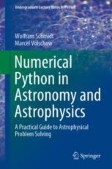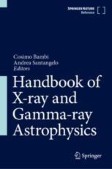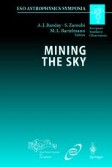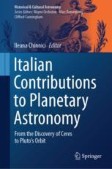Search
Search Results
-
Life cycle assessment of the Athena X-ray integral field unit
The X-ray Integral Field Unit (X-IFU) is the high-resolution X-ray spectrometer to fly on board the Athena Space Observatory of the European Space...

-
On the Kinetic Recession Velocities of Astronomical Objects
AbstractIn the framework of the Standard cosmological model, we study the “lookforward” history of the expanding universe, subject to certain rules,...

-
Searching for long faint astronomical high energy transients: a data driven approach
HERMES Pathfinder is an in-orbit demonstration consisting of a constellation of six 3U nano-satellites hosting simple but innovative detectors for...

-
Deployable cryogenic cross-dispersing unit for simultaneous zJHK spectroscopy
A modular cryogenic cross-disperser MOBIUS for the Large Binocular Telescope (LBT) is being developed to produce a simultaneous zJHK spectrum with a...

-
Design and verification of the electric control box of the low energy x-ray telescope onboard the Insight-HXMT
The Low Energy X-ray telescope (LE) is one of the main instruments of the Insight-Hard X-ray Modulation Telescope (Insight-HXMT), the first Chinese...

-
Astronomical Data Analysis
Astronomy and astrophysics are highly data-driven research fields: Hypotheses are built upon existing data, models are used to make predictions and...
-
Fundamental Reasons for the Similarity and Differences of the Mass Spectra of Various Astronomical Objects
The mass spectra of astronomical objects of various kinds are compared: cosmic dust, asteroids, planets, stars, star clusters, galaxies, and galactic...
-
Single-Layer and Multilayer Coatings for Astronomical X-ray Mirrors
The bandpass of an X-ray telescope is defined by its reflecting surface, which most commonly is a thin film coating, either as a single-layer,...
-

-
Optical GRB Analyses: Results from Archival Plates
The deep archival astronomical plates represent a valuable tool for optical analyses of Gamma-Ray Bursts positions. We report on the results obtained...
-
Error correction and evaluation in astronomical speckle interferometry with low-light CCD camera
In the astronomical speckle interferometry, low-light CCD cameras such as the electron bombarded/multiplying CCDs (EB/EMCCDs) are being widely used...

-
Measuring the Astronomical Unit: The American Transit of Venus Expeditions of 1874 and 1882
When in 1874 and 1882 Venus passed in front of the face of the Sun, most countries with a scientific reputation to keep or to gain made plans to...
-
Autonomous navigation method and technology implementation of high-precision solar spectral velocity measurement
The velocity information of spacecraft can be directly obtained by the autonomous navigation method based on astronomical spectral velocity...
-
The Motivation for Observing the Astronomical Phenomena at Night
The vast majority of celestial phenomena can only be observed at night, and it takes a long time of continuous observation to find some laws. What is...
-
A crucial test for astronomical spectrograph calibration with frequency combs
Laser frequency combs (LFCs) are well on their way to becoming the next-generation calibration sources for precision astronomical spectroscopy
1 –6 ....
-
Regularization and Inverse Problems
An overview is given of Bayesian inversion and regularization procedures. In particular, the conceptual basis of the maximum entropy method (MEM) is...
-
From the Biela’s Comet to Pluto’s Orbit: The Paduan Contributions
Padua Astronomical Observatory had a long tradition in the calculation of orbital elements; ephemerides calculated by Giovanni Santini were by far...
-

-
The Nature of Light
Ancient notions of light, the origin of vision, and the nature of “rays” of light are described including examples from ancient Greek and early...
-
Night sky brightness measurement, quality assessment and monitoring
Ground-based optical astronomy necessarily involves sensing the light of astronomical objects along with the contributions of many natural sources...

